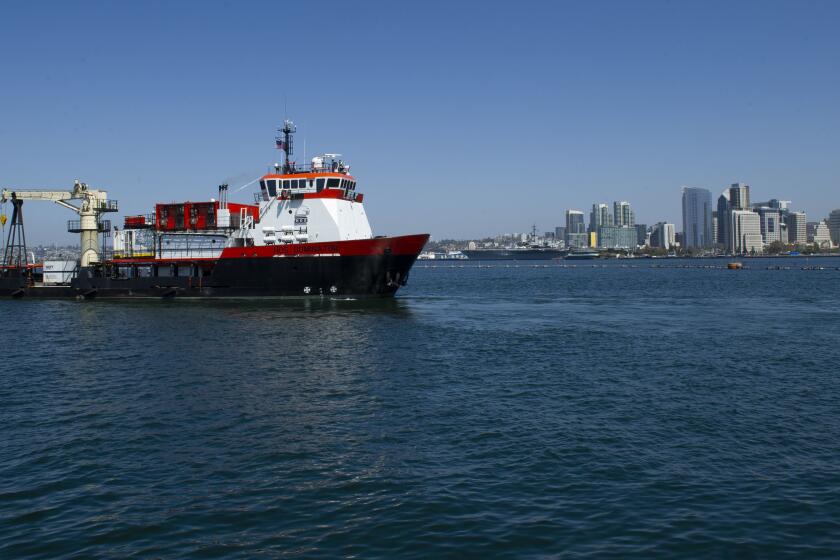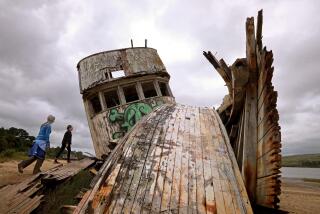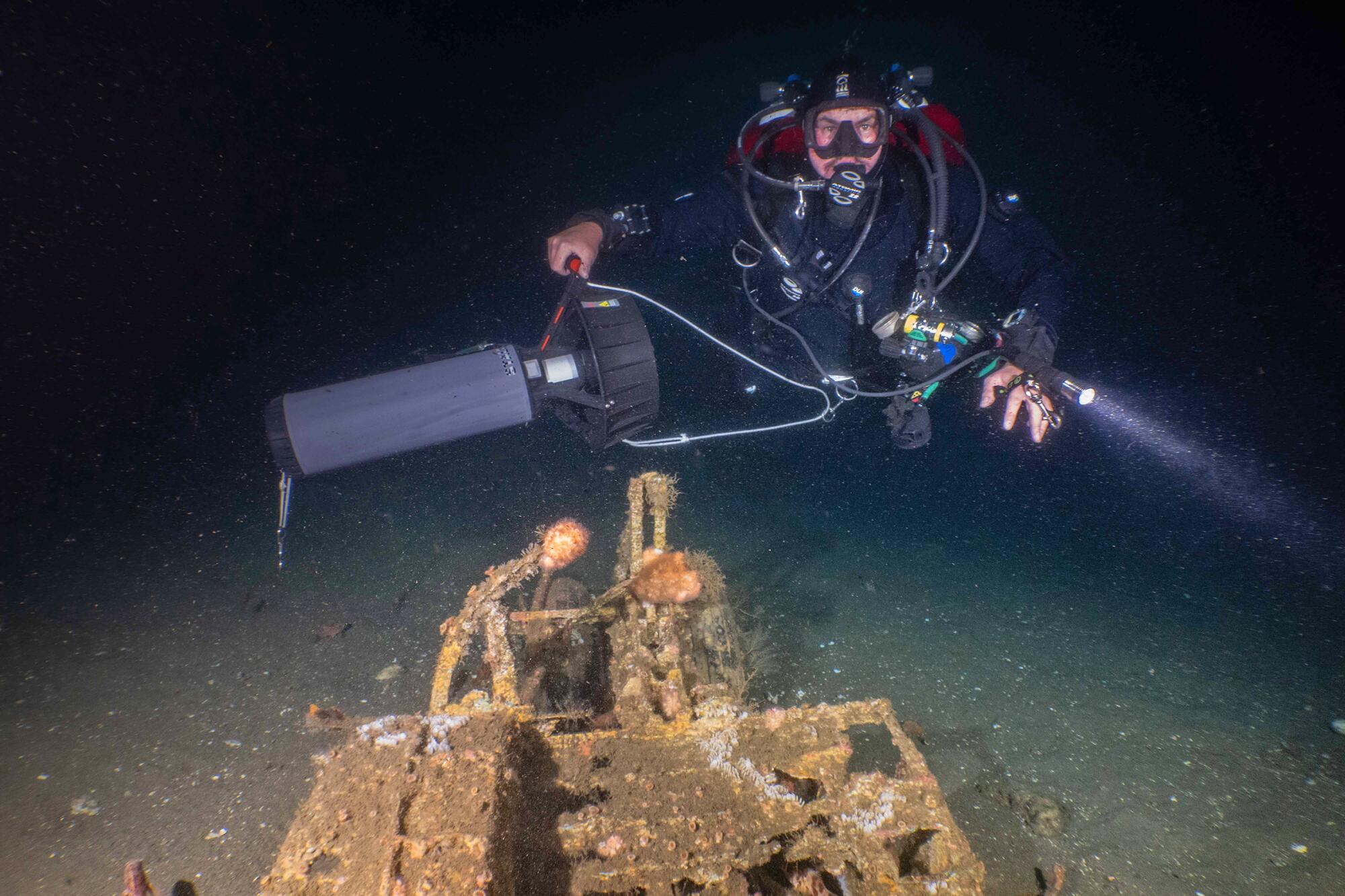
- Share via
SAN DIEGO — Deep-sea divers Brett Eldridge and Tyler Stalter enjoy exploring the wrecks of ships and airplanes deposited by destiny on the ocean floor — sunk by stormy weather, shredded by war, mugged by mechanical mishap.
They also share a passion for undiscovered historical hulks, those vessels lost to time and shifting sands. They know the waters off Southern California are home to dozens of them. So they pore over sonar maps and video taken by remote controlled submersibles for signs of ghostly ruins, and then dive to see what’s there.
Last year, about four miles off Pacific Beach, Stalter located a World War II-era Dauntless bomber. It went down during training from North Island, killing two aviators whose bodies were never recovered.
This summer, the divers found what they thought might be the holy grail of lost helicopters, a Navy Sea King famous for plucking Apollo astronauts from their capsules after moon-mission splashdowns.
Known informally as Helo 66, for the number painted on its side, the Sea King crashed west of Coronado during a nighttime training mission on June 4, 1975. Four crew members were rescued, but one died a few weeks later from his injuries.
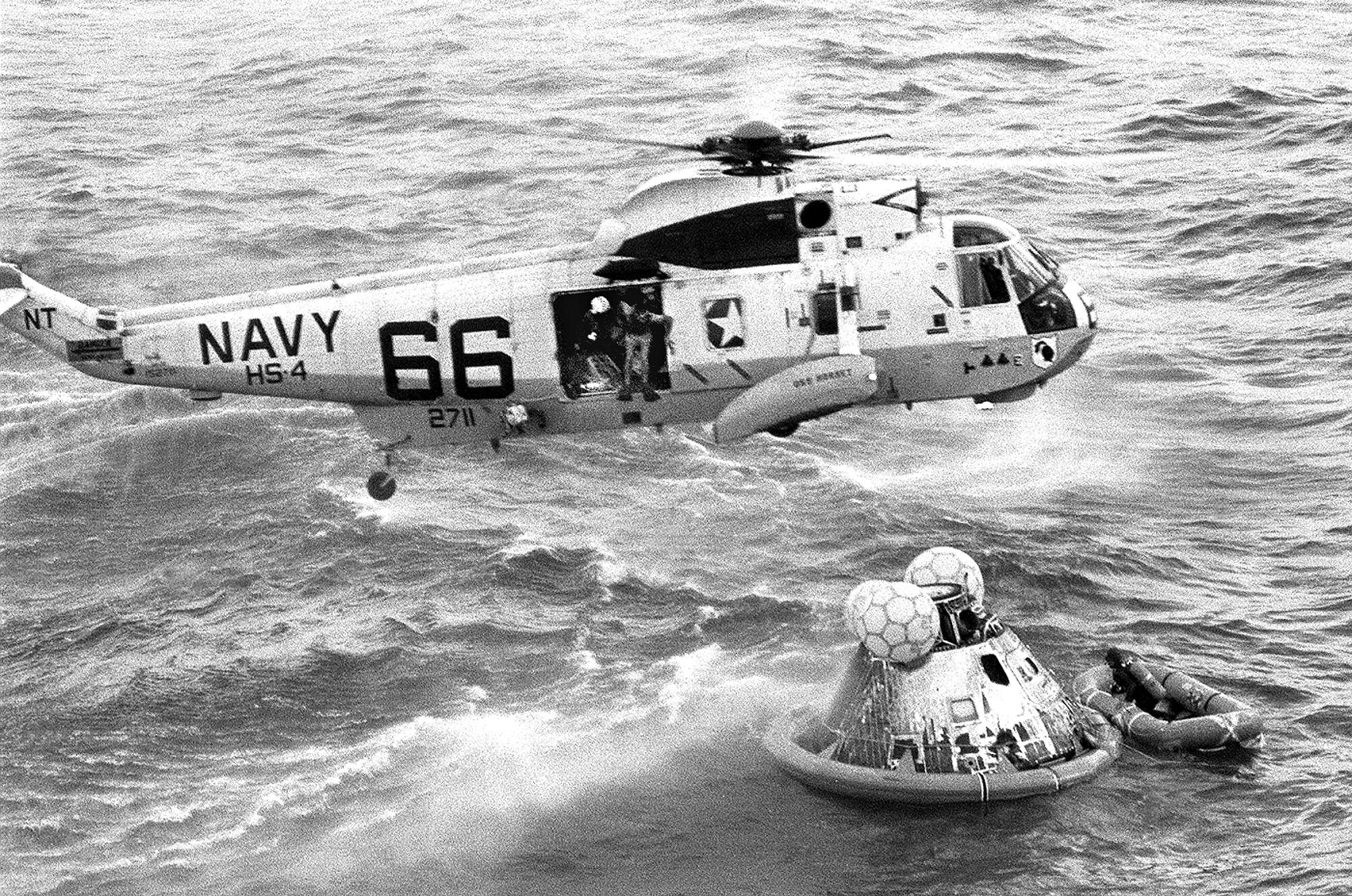
Although an accident report said the copter sank in water about 4,800 feet deep, there have been rumors in military and diving circles that it’s been spotted over the years in much shallower sea, about 200 feet down. Some of the reports claimed the fuselage was still intact — unlikely, because of the way helicopters typically come apart in crashes, but tantalizing.
So when Stalter was on the internet one day and saw underwater video of what looked like a helicopter wreck in local waters — and at a depth that matched the rumors — he and Eldridge got excited. They chartered a dive boat, Marissa, in July.
A dive that deep is beyond the safe reach of recreational compressed-air tanks. Trained as technical divers, the two used mixed gases instead, a technique that allows for deeper dives but shortens how long they can stay below because it requires decompression stops on the way up.
They had about 20 minutes to explore, and what they found was promising. A main rotor and engine. Bits of a fuselage and part of a tail with some lettering on it. A rear rotor and a landing gear with two wheels. A dipping sonar, used to hunt submarines.
“Definitely a Sea King,” Eldridge said.
But which one?
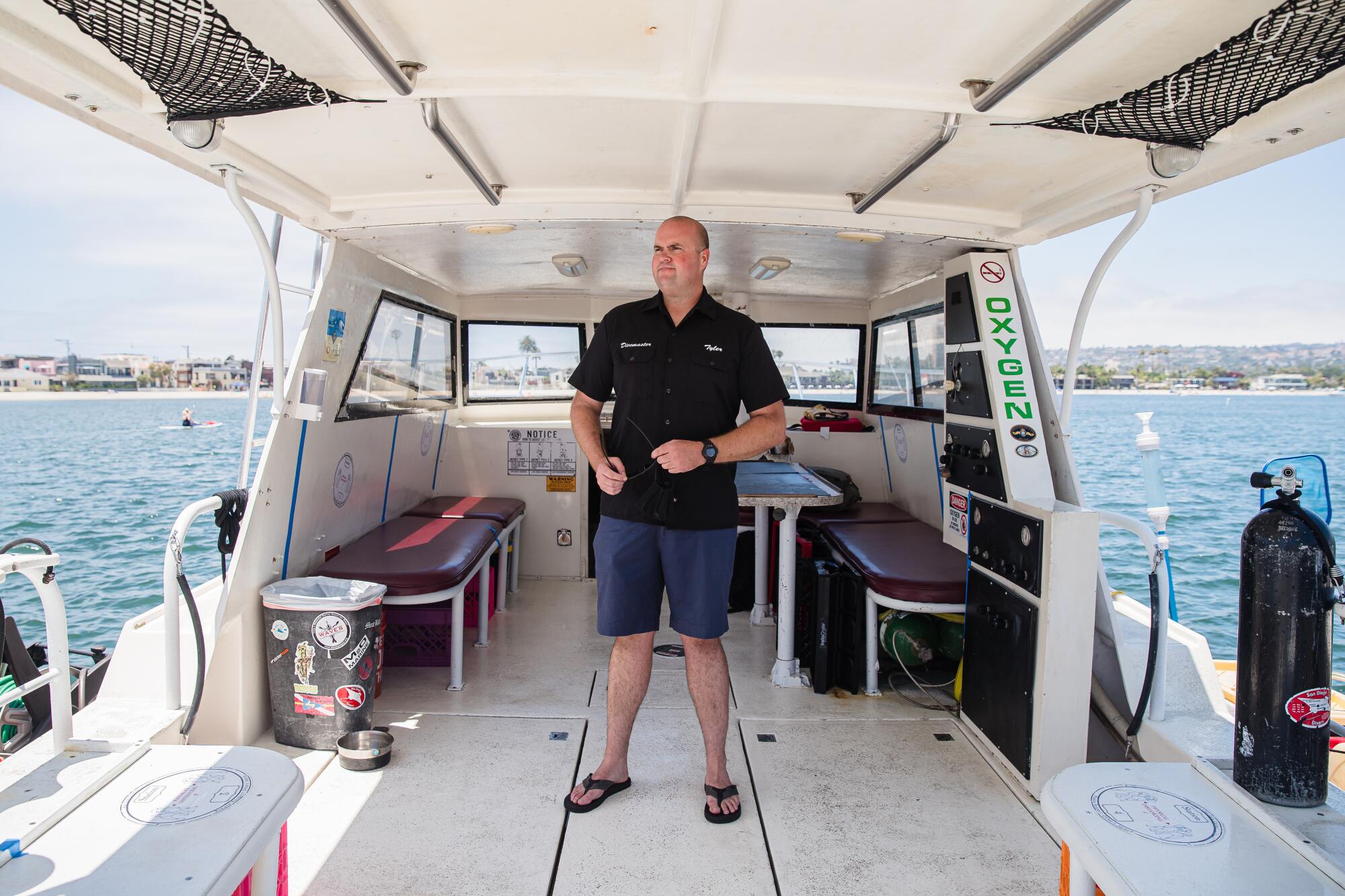
Passionate about history
Stalter, a 35-year-old firefighter in San Diego, and Eldridge, a 54-year-old cybersecurity advisor from Newport Beach, met in a roundabout way because of COVID-19.
Eldridge takes diving vacations to famous wrecks — Chuuk Lagoon in Micronesia, for example, a kind of underwater Disneyland because it’s home to more than 100 sunken World War II ships, planes and submarines. But when the pandemic curtailed international travel, he turned his eyes to more local waters. That led him to Stalter.
Both have an interest in history, and in solving mysteries that might bring comfort, if not closure, to people forever wondering about loved ones lost at sea.
It’s an issue now for the families of the five Navy sailors killed when their MH-60S Seahawk helicopter crashed while trying to land on an aircraft carrier off San Diego on Aug. 31. The wreckage is believed to be in waters 4,000 to 6,000 feet deep. An underwater search and salvage operation began last week.
The San Diego-based helicopter crashed and sank in 4,000 to 6,000 feet of water last month, killing five
“There are a lot of air crews missing in the waters off Southern California,” Stalter said. “Most of them don’t show up in official MIA databases. It’s important to research them and get their stories told.”
Telling the story of the Sea King eventually involved about 100 hours of combined sleuthing.
They came back from the first dive still believing that the copter might be the fabled Helo 66, but they hadn’t found any pieces with a bureau number or tail number that would allow a positive identification.
And they were bothered by something: the location of the dipping sonar. Helo 66 crashed while it had the sonar deployed in the water, attached to a cable. The sonar in all likelihood would be some distance away from the rest of the wreckage on the ocean floor. But it was found next to part of the main fuselage, with what appeared to be all the cable rolled up on a spool.
Had the helicopter crew reeled in the cable in an effort to avoid crashing? Or had Eldridge and Stalter located a different bird?
They did more research and learned that another copter had crashed in the area in October 1964, 11 years before Helo 66. It was on a nighttime training mission when it went into the water with four people aboard. All were rescued.
It, too, was a Sea King, but a different model. One of the differences was the length of the sonar cable. Helo 66 carried a 500-foot cable; the 1964 copter would have had a 250-foot one.
In August, Eldridge went down for a second look at the wreckage with another diver, Ben Lair. (Stalter was out of town.) They took measurements of the cable spool to calculate an approximate length of the cable. They came up with 250 feet.
Mystery solved. It wasn’t Helo 66 — a disappointment, Eldridge said — but possibly the Sea King that had crashed 11 years earlier.
Except when Eldridge shared his findings with a military-aviation expert, the expert raised doubts. If the wreckage was from 1964, the copter would be all gray in color, the expert noted. The one on the ocean floor had pieces that are white. The Navy had changed the color scheme from all-gray to gray-and-white in 1967.
Mystery unsolved.
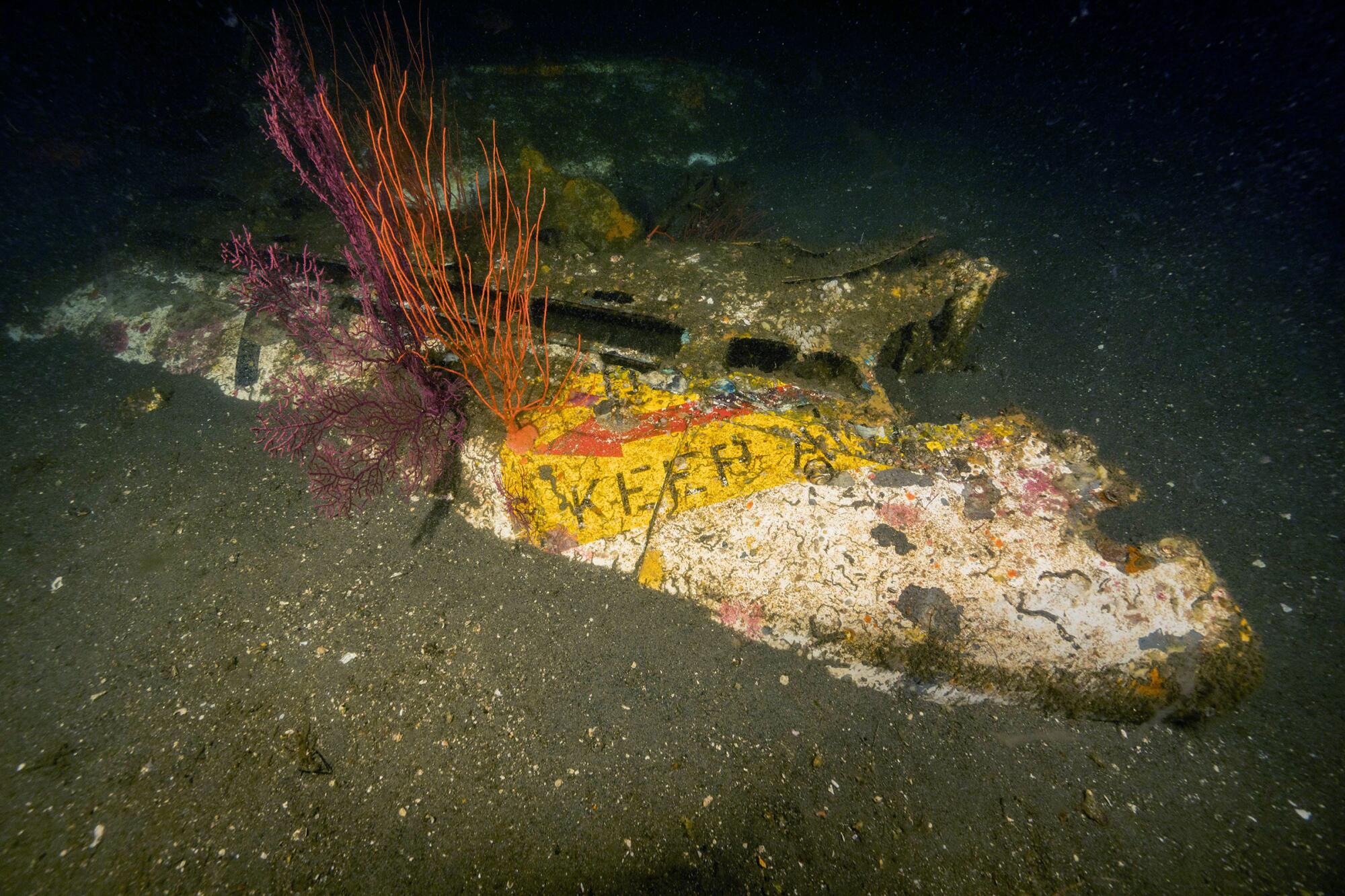
Jigsaw puzzle
Plunging back into research, Stalter found news clippings that mentioned a third Sea King crash off the San Diego coast. It went down on Sept. 3, 1968, during a test flight. The helicopter had just gone through a major overhaul at North Island. Two crew members were rescued by a nearby fishing boat. A third aviator was never found.
The location of the crash, about 10 miles off Imperial Beach, made it a possible match for the wreckage. The date fit the gray-and-white color scheme, too.
When Eldridge had made his second dive to the copter, he took a scrub brush to clear mud off pieces of the debris. On the tail section, he found black tail code letters identifying which aircraft carrier group the helicopter was part of.
One of the letters was clearly an “N.” The second letter was only partially visible because of damage from the crash. But it didn’t appear to be an “E,” which Helo 66 would have had, and it didn’t look like a “U,” which would have matched the 1964 Sea King.
It could be an “S,” though, and that lines up with the copter that crashed in 1968. The carrier Kearsage was in between deployments then and stationed in San Diego. One of its anti-submarine helicopter squadrons, HS-6, flew Sea Kings with the tail code “NS.”
To Stalter and Eldridge, all the pieces fit. They are now almost 100% certain that the wreckage they found is from the helicopter that crashed in 1968.
“It’s like a jigsaw puzzle,” Eldridge said. “You get some satisfaction when you put it all together.”
They’ve notified the Naval History and Heritage Command in Washington, D.C., which has underwater archaeologists who oversee the identification and preservation of sunken military craft. In general, the agency leaves wreckage in place and considers hallowed those sites associated with a loss of life.
Eldridge wrote a post on his diving blog about the discovery and apparent positive identification. Stalter shared the link on social media, including a Facebook page for the HS-6 helicopter squadron.
Several veterans responded, reinforcing the belief the divers have that solving these mysteries can ripple through the lives of those directly affected. One of the veterans was close friends with Gustav Herrmann, the co-pilot whose body was never recovered after the crash.
“If this proves to be his helicopter,” the veteran wrote, “treat it as sacred ground.”
The divers also tracked down Don Sanborn, the copter’s pilot. He’s 79, a retired real estate executive who splits his time between Las Vegas and Salt Lake City.
“Even though it happened 53 years ago,” Sanborn said in a phone interview with the Union-Tribune, “I’m amazed at the specific things I remember.”
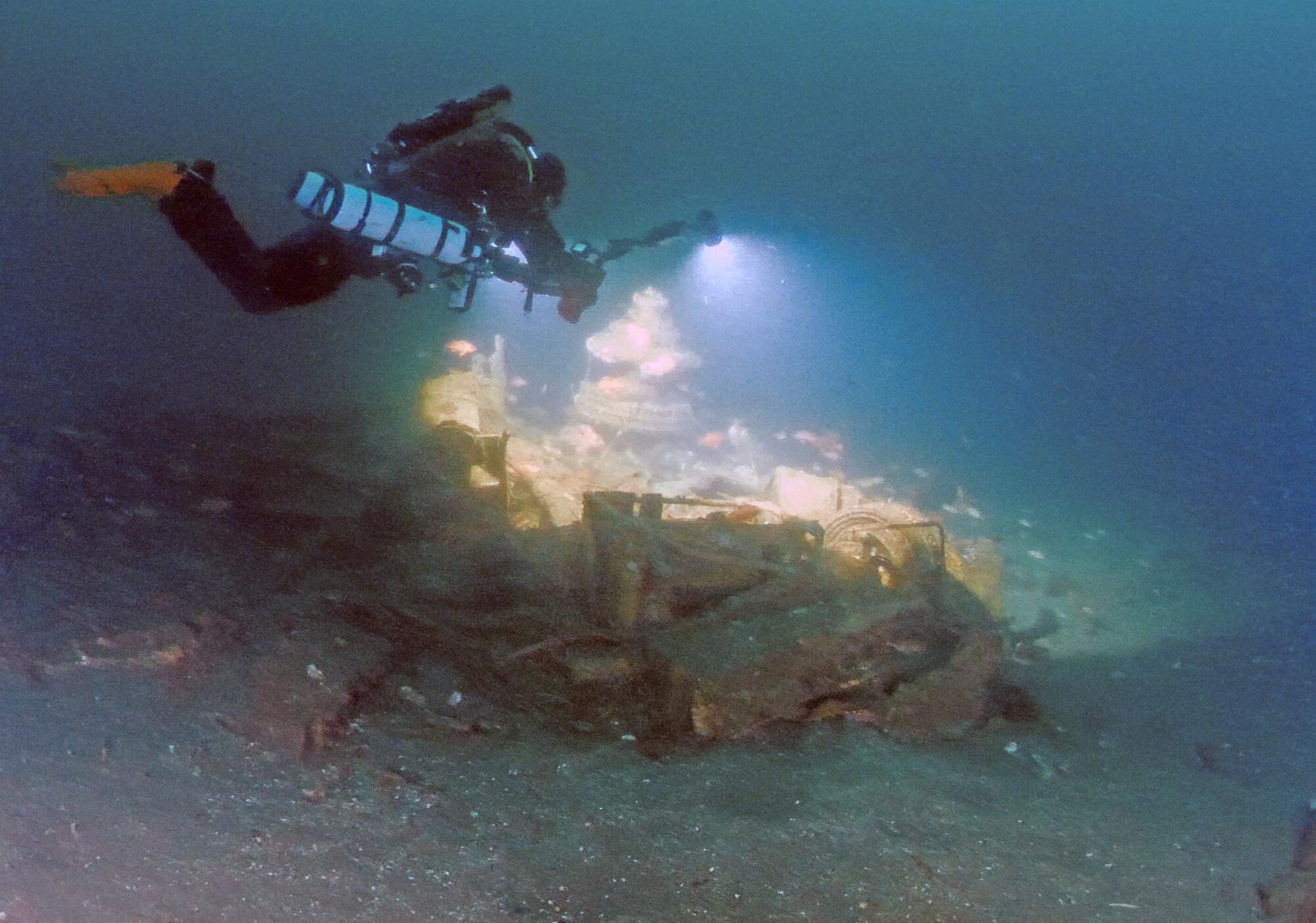
Revisiting the past
As the squadron’s senior pilot on that September afternoon in 1968, Sanborn, a 26-year-old lieutenant, got the assignment to test out the copter after its overhaul. He and Herrmann, 25, had flown together before, a couple of dozen times. The third crew member was Robert May, 27, an electrician’s mate.
They picked it up at North Island and did hover testing over land, then headed out to sea. They were testing equipment that lets pilots dump fuel in an emergency, about 200 feet over the ocean surface, when both engines flamed out. The malfunction is believed to have been caused by faulty installation of an electrical connection to the fuel pumps, Sanborn said.
He blacked out from the impact and came to underwater, still belted to his seat. As he had been trained to do, he reached over to release the side window, but the side window wasn’t there. Somehow his seat had become separated from the copter with him still in it.
Sanborn undid the seat belt and swam toward the surface, inadvertently gulping in fuel. His boots and his helmet had been ripped off in the crash. His life jacket had ripped apart.
May surfaced nearby, but Herrmann never did. He left behind a wife, Jan, who was pregnant.
A small fishing boat picked up the survivors. Sanborn said he spent about two weeks in the hospital.
Two months after the crash, Sanborn retired from active duty. He spent 15 more years in the reserves, flying Sea Kings out of San Diego and San Francisco.
Now he’d like to revisit his past, or at least the part reawakened by the apparent discovery of the helicopter. He’s planning to get on a boat with the divers, go out to a spot above the wreckage, and drop a wreath over the side.
“Closure,” he said. “It’s closure.”
For him. For Herrmann’s family. For a mystery solved.
More to Read
Sign up for Essential California
The most important California stories and recommendations in your inbox every morning.
You may occasionally receive promotional content from the Los Angeles Times.
